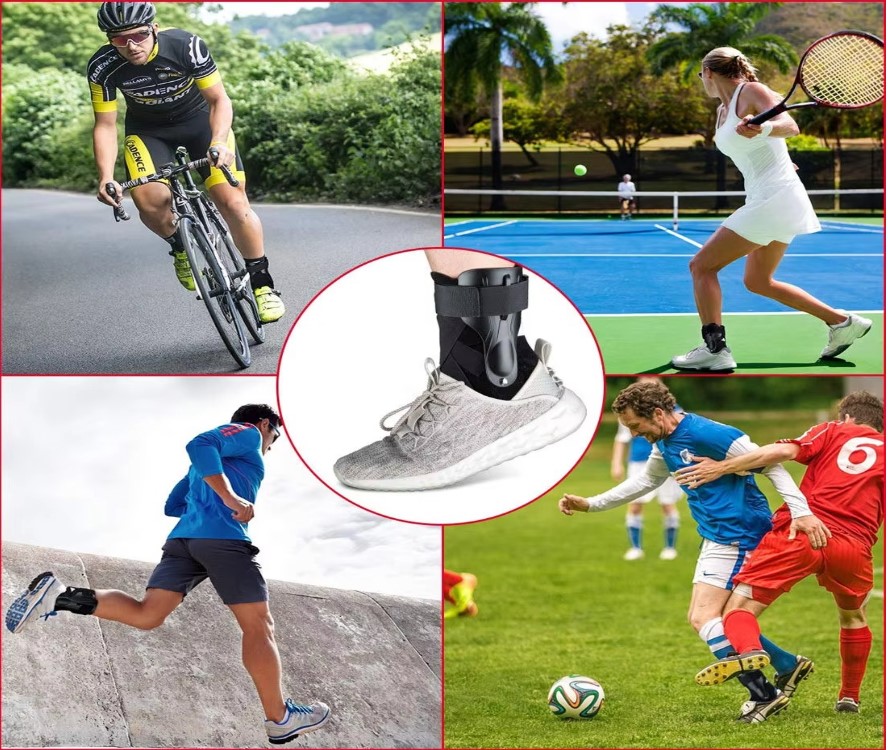
Best Ankle Braces for Runners: Prevent Sprains and Stay Active
Running is one of the most popular ways to stay fit, relieve stress, and enjoy the outdoors. However, it can also take a toll on your ankles—especially if you run regularly or on uneven surfaces. Sprained ankles are one of the most common injuries among runners. That’s where an ankle brace can make all the difference.
Whether you’re a casual jogger or training for a marathon, using the right ankle brace can help prevent injuries, provide extra support, and keep you moving with confidence. In this blog, we’ll explore the different types of ankle braces for runners, how to choose the right size, and answer common questions to help you make an informed decision when you want to buy best ankle brace for running.
Why Runners Need Ankle Braces
Running places repetitive stress on your feet and ankles. A small misstep, fatigue, or weak ankle muscles can lead to sprains or even more serious injuries. An ankle brace provides stability and compression, reducing the risk of twists and turns that can lead to a sprain.
Here are a few reasons why runners benefit from ankle braces:
-
Injury Prevention: Helps keep your ankle aligned and supported.
-
Recovery Support: Speeds up recovery if you’ve had a previous ankle injury.
-
Confidence Boost: Gives peace of mind while running, especially on trails or uneven surfaces.
-
Stability and Compression: Enhances balance and circulation.
Types of Ankle Braces for Runners
When looking to buy the best ankle brace for running, it’s important to know which type fits your needs. Let’s look at the most common types:
1. Compression Sleeves
These are soft, lightweight ankle braces that offer mild support and improve blood circulation. They’re made of breathable, stretchy materials like nylon and spandex.
-
Best for: Mild discomfort, swelling, or minor ankle weakness.
-
Pros: Comfortable, easy to wear with running shoes.
-
Cons: Not ideal for serious injuries or high-impact sports.
2. Wrap-Around Ankle Braces
These provide adjustable compression with straps that wrap around the ankle. They are slightly more supportive than sleeves but still flexible.
-
Best for: Mild to moderate support needs.
-
Pros: Adjustable tightness, lightweight.
-
Cons: May shift during intense runs if not secured well.
3. Lace-Up Ankle Braces
These offer a snug fit and moderate support with a lace-up system, often combined with elastic straps. They’re more structured than sleeves or wrap-style braces.
-
Best for: Moderate ankle instability or post-injury use.
-
Pros: Firm support, customizable fit.
-
Cons: Slightly bulkier, takes longer to put on.
4. Rigid or Semi-Rigid Braces
These include plastic or metal inserts that prevent excessive movement, offering maximum protection.
-
Best for: Recovery from serious ankle injuries or chronic instability.
-
Pros: Strongest support.
-
Cons: Not ideal for long-distance running due to limited flexibility.
Choosing the Right Size
Choosing the correct size is just as important as the type of ankle brace. A poorly fitting brace can cause discomfort or even lead to more injuries.
Here’s what to consider:
-
Measure Your Ankle Circumference: Use a soft measuring tape just above the ankle bone.
-
Check Size Charts: Always refer to the manufacturer’s size guide (if available). Sizes may vary from one brand to another.
-
Consider Shoe Fit: Make sure the brace fits comfortably inside your running shoes.
-
Try It On: If possible, wear it while walking or doing light exercises to see if it stays in place and feels supportive.
Tips for Using an Ankle Brace While Running
-
Start Gradually: If you’re new to using an ankle brace, start with short runs to adjust.
-
Listen to Your Body: If you feel discomfort or pressure, adjust or try a different brace.
-
Keep It Clean: Wash the brace regularly to avoid odors and skin irritation.
-
Replace When Worn Out: Like shoes, ankle braces wear out over time. Replace them if they lose elasticity or support.
Frequently Asked Questions (FAQs)
1. Can I run with an ankle brace every day?
Yes, you can run daily with an ankle brace, especially if you’re prone to sprains or recovering from a past injury. However, make sure the brace is comfortable and doesn’t restrict your movement too much.
2. Will wearing an ankle brace weaken my ankle?
Not necessarily. An ankle brace provides external support, but you should also strengthen your ankle with balance and resistance exercises. The brace is just one part of overall ankle health.
3. How tight should an ankle brace be?
It should feel snug but not tight enough to cut off circulation. You should be able to move your foot comfortably while still feeling supported.
4. Do I need an ankle brace even if I’ve never had an injury?
If you run on uneven terrain or feel slight instability in your ankle, a light ankle brace or compression sleeve can help prevent injury.
5. Can I wear an ankle brace with any running shoe?
Most low-profile braces like sleeves or wrap-around styles fit easily inside standard running shoes. Rigid braces may need roomier footwear.
Final Thoughts
Using an ankle brace while running is a smart way to protect yourself from sprains, support past injuries, and enjoy your runs without fear. From simple compression sleeves to more supportive lace-up and rigid designs, there’s an option for every runner’s need.
Remember, the best ankle brace is the one that fits well, suits your activity level, and feels comfortable. If you’re ready to buy best ankle brace for running, consider your ankle’s condition, the type of brace you need, and how it fits into your running routine.
Stay active, stay safe, and give your ankles the care they deserve!